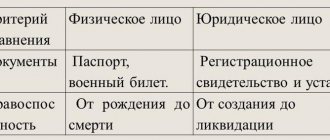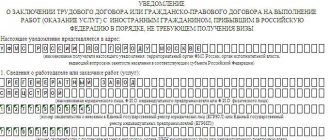Home / Alimony / Predict the result - judicial practice in collecting alimony penalties
The practice of collecting alimony penalties is contradictory. The opinions of the Constitutional and Supreme Courts, which are expressed in rulings and decisions, often contradict each other. This complicates the process of holding debtors accountable; recipients of money have doubts that they will be able to receive full compensation for improper performance of their duties by the payer.
Features of the collection procedure
Two norms come into conflict - Article 115 of the Family Code (FC) and Clause 1 of Article 333 of the Civil Code (Civil Code) of the Russian Federation. The second paragraph of the first article describes the responsibility that the payer bears in case of late payment of alimony. The specified norm of the Civil Code of the Russian Federation allows us to reduce the amount of the penalty.
We are talking about the following:
- If there is arrears in alimony payments, a penalty is charged in the amount of 0.5% of the amount of the debt (Article 115 of the Insurance Code);
- If the amount of the penalty is disproportionate, it may be reduced by court decision (Article 333 of the Civil Code).
Guided by these norms, magistrates made decisions that reduced the penalty calculated in the claim. However, in 2012, the Supreme Court indicated that in cases that relate to the fulfillment of alimony obligations, the provisions of Article 333 of the Civil Code of the Russian Federation are not allowed.
But in 2021, the Constitutional Court (CC) of the Russian Federation issued a ruling in which it indicated the following:
- When making a decision, it is necessary to maintain the level of financial support for the child as much as possible.
- Respect the interests of not only children, but also their parents.
In this regard, in the opinion of the Constitutional Court of the Russian Federation, the provisions of the above article of the Civil Code of the Russian Federation are quite applicable to protect the legal rights of alimony payers.
Family lawyers also disagree with the position of the RF Armed Forces. Even if we do not take into account the provisions of the Civil Code of the Russian Federation, Article 114 of the RF IC allows for the possibility of reducing the amount of the penalty due to untimely failure to pay alimony . The provisions of this norm are similar to the position of the Constitutional Court of the Russian Federation; they allow for a reduction in penalties upon comprehensive consideration of the payer’s position, his marital status and other circumstances worthy of attention.
For the parties, this means that there is no single algorithm that is 100% likely to lead to a win in the dispute. The process will be complex, its outcome greatly depends on the subjective opinion of the judge.
Reasons
To make claims for alimony and penalties, the recipient must have any of the following documents :
- Judgment.
- Agreement between spouses on the amount and procedure for financial support for the child.
In addition, it is recommended to provide official correspondence between the parties, which confirms the fact that the debt arose. It is often difficult to submit such letters, since debtors avoid receiving requests from the recipient of the money. But in court, it is the debtors who have to prove the fact of transferring money in a timely manner and in full. Conventionally, we can assume that for them in such a dispute there is a presumption of guilt.
Another situation is that alimony was transferred without a court decision or agreement, but then a debt arose. On the one hand, the person actually performed the duties. On the other hand, a debt has arisen, but the title document cannot be submitted to the court.
In this case, the recipient of the funds has the right to demand through the court the payment of alimony for the last three years. The amount will be determined during the meetings; the payer will hardly be able to document the fact of transferring money for this period.
That is, if the money was transferred voluntarily without confirmation, but a debt arose for one or several months, the recipient may legally demand payment of alimony for the previous three years. This is a powerful lever of influence on the payer, which allows the dispute to be resolved in favor of the child in a pre-trial manner.
There are no grounds for calculating a penalty if alimony is not transferred or is not received on time for the following reasons:
- Wages were not paid on time;
- Bank delay in transferring funds;
- An error by the employer's financial institutions or accounting;
- In other cases, which exclude the direct fault of the payer.
If the debt is repaid
This circumstance does not exempt from the accrual of penalties for timely payment of alimony. On the other hand, the court may be guided by the provisions of Articles 114 of the IC and 333 of the Civil Code of the Russian Federation and accept this fact in conjunction with other circumstances as a basis for reducing the amount of the penalty.
For the payer, repaid alimony debt (except for penalties) will mean a reduction in the base for the subsequent accrual of penalties . By delaying the resolution of the dispute, he progressively increases the debt, which is formed from the actual unpaid alimony and penalties for each month. The fact that a dispute is being considered in court does not relieve the payer from obligations to the recipient of funds, nor does it suspend them.
How to calculate the penalty for alimony?
The main task of the plaintiff when filing a claim for the collection of penalties for late payment of alimony is to independently calculate its amount. To calculate the amount of the penalty correctly, you must refer to Art. 115 of the RF IC, which states that the penalty is calculated in the amount of 0.1% of the total amount of debt for each day of non-payment.
Assistance in calculating the amount of the debt has the right to be provided by a bailiff, who, in the decree on calculating the debt, indicates the exact monthly debt accumulated by the defaulter, and at the end displays its total amount.
The procedure for calculating the penalty depends on the method in which alimony was established for payment:
- In a fixed amount of money. In this situation, the payment arrears will increase monthly in an amount that is a multiple of the fixed amount established by the writ of execution (for one month ×1, for two months ×2, for three months ×3, etc.).
- As a share of income. In this case, the debt begins to accumulate when the payer loses his job and has no other income that can be withheld. Therefore, according to Art. 113 of the RF IC, the monthly debt will be calculated in the same shares, but based on the size of the average monthly salary in the Russian Federation as a whole. This circumstance is also reflected by the bailiff in the resolution on the calculation of the debt.
If the calculation of the penalty by the plaintiff is overestimated or calculated incorrectly, the judge is obliged to recalculate (recheck) the amount of such fine.
Ivan P. must pay alimony in a fixed amount of 6,000 rubles. monthly. His ex-wife did not receive the prescribed payments from January to July, i.e. within 7 months. The calculation of the penalty for the defaulter in this case will be as follows (see table).
| No. | Month of delay | Amount of debt (multiples of the number of months of non-payment), rub. | Penalty percentage for one day, % | Number of days in a month | Amount of penalty in the current month, rub. |
| 1 | January | 6 000 | 0,1 | 31 | 186 |
| 2 | February | 12 000 | 0,1 | 28 | 336 |
| 3 | March | 18 000 | 0,1 | 31 | 558 |
| 4 | April | 24 000 | 0,1 | 30 | 720 |
| 5 | May | 30 000 | 0,1 | 31 | 930 |
| 6 | June | 36 000 | 0,1 | 30 | 1 080 |
| 7 | July | 42 000 | 0,1 | 31 | 1 302 |
| Total: | 5 112 | ||||
A detailed calculation of the penalty by month for this example will look like:
- January: 6000 rub. (fixed amount for 1 month) × 0.1% (penalty) × 31 (number of days in January) = 186 rubles.
- February: 6,000 × 2 (amount of debt for 2 months) × 0.1% × 28 (number of days in February) = 336 rubles.
- March: 6000 × 3 months × 0.1% × 31 days = 558 rub.
- April: 6000 × 4 months × 0.1% × 30 days = 720 rub.
- May: 6000 × 5 months × 0.1% × 31 days = 930 rub.
- June: 6000 × 6 months × 0.1% × 30 days = 1080 rub.
- July: 6000 × 7 months × 0.1% × 31 = 1302 rubles.
We suggest you familiarize yourself with: Receipt for receipt of child support: sample drafting, how to write a power of attorney
In total, the total amount of the penalty for 7 months will be: 186,336,558,720,930 1080,1302 = 5112 rubles.
Formulas for calculating penalties for non-payment
When filing a claim or during pre-trial correspondence with the payer, it is necessary to calculate the due penalty. There are several rules, namely :
- The amount of the penalty is determined for each month.
- For the subsequent billing period, the debt for the entire previous period is included along with the penalty.
To carry out the calculation yourself, you need to apply the following formula H = C × D × 0.5/100, where :
- N – size of the penalty;
- C – amount of alimony debt for the billing month;
- D – number of overdue days.
Having calculated the penalty, you need to determine the total debt. Its size for the billing month is calculated using the following formula C=C1+H1+C2+H2+…+Cn+Hn, where:
- С1, С2, Сn – debt for payments for each overdue month of previous periods;
- Н1, Н2, Нn – penalty for the corresponding overdue month.
Thus, the second rule is observed and the penalty for the previous payment period is calculated as a penalty for the current billing period. It turns out that if the amount of payments for the financial support of the child is constant, then the amount of the penalty increases every month.
General information about calculating alimony penalties using a calculator is described in a special material. Recommended reading.
You can also apply another formula , which allows you to immediately calculate the total debt, including the amount of the penalty. It looks like this: Co=0.05×(C1×Dn+C2×Dn-1+ C2×Dn-2+ …+ Cn×D1), where:
- С1, С2, Сn – debt for payments for each overdue month of previous periods;
- Дn – number of days for the entire debt period;
- Dn-1 – number of days for the entire debt period except the first month;
- Dn-2 – number of days for the entire debt period except the first two months;
- D1 – number of days in the last month.
Using the above formulas, the plaintiff can independently calculate the amount of debt for alimony obligations, including the penalty. If an error occurs, the court will independently carry out the calculations, the plaintiff will have to agree with their result and change the requirements by filing a corresponding petition.
Algorithm of actions
As stated above, such disputes do not fall into the category of simple ones. The ambiguous position of the Supreme Court and the Constitutional Court of the Russian Federation, practicing family lawyers and judges leads to contradictory decisions. Therefore, the first stage includes :
- Collection of all documents related to the dispute;
- Seeking advice from practicing family lawyers;
- Additional collection of documents in accordance with the recommendations received;
- Pre-trial dispute resolution.
As a rule, for consultation you need to submit an agreement between the spouses on the amount and procedure for paying alimony or a court decision. Other documents are written demands or correspondence between the parties that relate to alimony payments, challenging or recognizing paternity, requests from the payer to reduce the amount of payments, etc.
For example, if the payment of funds is terminated unilaterally on the basis of non-confirmation of paternity, documents about this must be submitted to a lawyer during the consultation. It is not at all necessary that the recipient of the money is deprived of the rights to alimony, including a penalty for the debt incurred.
The pre-trial procedure for resolving a dispute helps to collect additional evidence. Correspondence, a documented fact of dishonest behavior of the payer, deprives him of the opportunity to hope for a lenient attitude from the court.
Let's find out who should calculate the penalty for alimony by reading a special article prepared by the editors of our website.
At the second stage it is necessary:
- File a claim.
- Attach to it the documents collected pre-trial, including the calculation of the penalty for the debt.
- Send a package of documents to the court.
- Defend the position set forth in the claim yourself or hire a lawyer to do so.
On the one hand, carefully prepared pre-trial work simplifies the process of filing a claim in court. On the other hand, competent defense implies, among other things, a quick response to the defendant’s actions and timely filing of the necessary petitions. This requires experience and special knowledge. Persons who are not professionally involved in jurisprudence have neither one nor the other.
If you are not satisfied with the court decision, you will have to prepare an appeal and cassation. In this case, the second stage will be delayed; more about this below.
If you are interested in the issue of drawing up an application for alimony penalties, we recommend that you read this article.
The third stage is to implement the court decision . The writ of execution is sent to the bailiffs, who take measures to collect the alimony debt and the calculated penalty. In case of significant debt, the payer is charged 50% of his earnings as repayment if he is not able to pay the debts immediately.
In some cases, it is impossible to find the alimony payer on your own, so you will have to contact law enforcement agencies, look for him through the police, tax authorities.
Bailiffs regularly need to remind themselves and build interaction with the special group that deals with alimony payers.
Malicious evaders from responsibilities for the material maintenance of children are placed under control by the Border Service of the Russian Federation, prohibiting them from leaving the country. In some cases, criminal liability is provided (Article 157 of the Criminal Code of the Russian Federation).
What should I do if my claims are denied by a court decision?
If the claim for the recovery of alimony penalties is not satisfied, the interested person may :
- File an appeal or cassation.
- Refuse further legal proceedings.
- Resume consideration of the case based on newly discovered circumstances.
- Resolve the dispute with the payer out of court.
Each of these actions depends on many factors. For example, filing a complaint with a higher authority makes sense if the court made a decision in violation of substantive and procedural law.
However, judicial practice shows that the legislator and the judiciary, by default, primarily protect the rights of children and single mothers , as well as the most vulnerable categories of the population (pensioners, disabled people) who need alimony from their relatives and friends.
Refusal of claims for payment of a penalty, as a rule, is motivated by their disproportionate or unreasonable amount. Another reason, as indicated above, is the different interpretation of the provisions of the Insurance Code and the Civil Code of the Russian Federation.
Therefore, it is necessary to review the claims and consult with practicing family lawyers regarding future prospects for the case. In such cases, the following options are possible :
- Reduce the amount of the penalty.
- Select the correct grounds for collecting the previous penalty.
- To substantiate in an appeal or cassation the violation by the court of first instance of the norms of procedural and substantive law.
As a rule, if the dispute becomes more complicated and it was not possible to resolve it in the first instance, you need to seek help from legal experts. It will no longer be possible to defend your position on payment of the calculated penalty without preparation.
Why did the Supreme Court prohibit the reduction of alimony penalties, but the Constitutional Court allowed it?
This is the importance of this story. The Supreme Court decided that the penalty for alimony is a special measure of family legal responsibility. And general rules cannot be applied to reduce it.
There really are no provisions in the family code for reducing the penalty. And if you use the civil code, it will violate the rights of those children who are not supported by their parents. The relationship between creditors and debtors is not the same as within a family.
The courts listened to this position and did not reduce the alimony penalty. Even those fathers who could not pay the full amount had no chance of reducing it.
Now there are chances: the Constitutional Court has explained to everyone how the law should be applied. But to use these rules, you will have to find and confirm good reasons.
The Supreme Court states its position, and the Constitutional Court explains the law.







